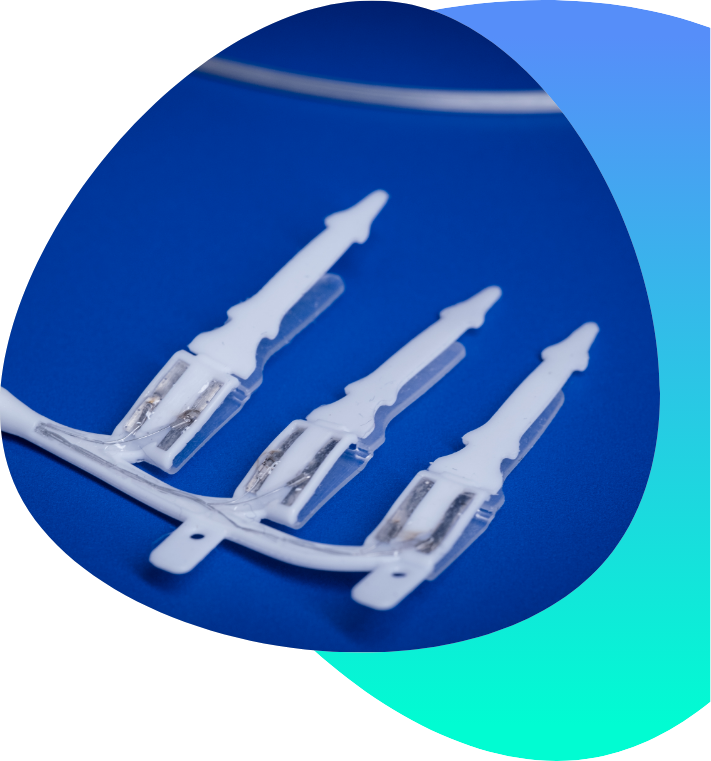Preventing recurrence of Crohn’s disease
Why is a new treatment for Crohn’s disease needed?
A type of inflammatory bowel disease (IBD), Crohn’s disease is a debilitating condition where the body attacks its own tissues causing excessive inflammation in the gut.
There is no cure for inflammatory bowel diseases, which affect over 80,000 Australians [1] and treatments are designed to reduce symptoms and prevent permanent damage.
In some cases when patients don’t respond to drug therapies, it’s necessary to have surgery to remove diseased parts of the bowel.
Around 80% of all people with Crohn’s disease need to have surgery to remove diseased parts of the bowel when they stop responding to drug therapy.
Unfortunately, the benefits of surgery are temporary, and Crohn’s disease returns for 70% of patients within 10 years of surgery, despite ongoing drug therapies.
It is therefore necessary to find an alternative to medical therapies, to prevent recurrence and the debilitating effects of Crohn’s disease.
Stopping recurrence of Crohn’s disease after surgery
The vagus nerve, which runs from the brain to the gut, with branches to almost every organ, including the heart, lungs, liver and pancreas, controls many processes in the body.
One of those processes is the body’s immune response. If the vagus nerve detects inflammation in the body, it transmits a signal to start an anti-inflammatory reflex response.
Bionics Institute researchers have found a way to stimulate the vagus nerve safely using a unique electrical bionic device.
Stimulating the vagus nerve activates natural processes in the body that lead to the reduction in the activity of inflammatory cells in the gut, and suppresses damaging inflammation caused Crohn’s disease.
This device has now progressed to clinical trial stage.
What sets this treatment apart from the rest?
The beauty of this device is that it kick-starts the body’s natural mechanisms, which means it causes less side effects than drug treatments.
In addition, while other medical devices for inflammatory bowel disease, currently in clinical trials, are inserted at the neck level, the Bionics Institute has developed a device that can be inserted in the abdominal cavity.
This means that the heart and lungs are not affected when the device is switched on.
Next steps for Bionics Institute researchers
The vagus nerve stimulation device developed to treat Crohn’s disease has passed safety tests for use in humans and is getting tested in clinical trials.
The clinical trial is called the ElectRx study (NCT05469607) and is currently recruiting patients at the Austin Hospital.
The trial is only for people having surgery to remove sections of the bowel damaged by Crohn’s disease.
During the procedure, the device will be attached to the abdominal branch of the vagus nerve with the aim of dampening inflammation at the surgical site following the operation.
The aim of the study is to show safety of the device and to help prevent the recurrence of Crohn’s disease at the surgical site.
Our next steps are to continue to recruit participants to take part in the clinical trial.
The research team
Bionics Institute researchers:
Professor James Fallon (PI), Professor Rob Shepherd (PI), Dr. Sophie Payne, Mr Owen Burns, Ms Michelle Bravo
External researchers:
Professor John Furness (PI, Florey Institute), Professor Robin McAllen (Florey Institute), Dr. Martin Stebbing (Florey Institute), Professor David Grayden (University of Melbourne)
Clinical collaborators:
Associate Professor Peter de Cruz (PI, Austin Health), Mr David Proud (Austin Health), Mr Graham Starkey (Austin Health) and Mr Bob Jones (Austin Health).
More information for researchers
A small pioneering clinical trial first demonstrated efficacy of cervical vagus nerve stimulation (VNS) in ileocecal Crohn’s disease patients (Bonaz et al., 2016). However, patients commonly reported voice alterations (dysphonia), coughing, pain and laboured/shortness of breath (dyspnea) during stimulation (Bonaz et al., 2016).
Although evidence for VNS therapy to treat IBD is promising, the current approach of stimulating the cervical vagus nerve has a number of clinical limitations, including an undesirable side-effect profile which could be limiting efficacy of treatment.
To overcome the limitations of cervical vagus nerve stimulation, the Bionics Institute have chosen a new anatomical location – that being the abdominal vagus nerve, which resides below the branches to the larynx and lungs and avoids the side effects described above. We have developed a new, unique device to stimulate the abdominal vagus nerve and have demonstrated safety in a large preclinical model, and efficacy in a model of IBD.
Publications
Payne et al., 2019 Bioelectronics in Medicine. https://doi.org/10.2217/bem-2018-0011
Payne et al., 2019 Frontiers in Neurocience. https://doi.org/10.3389/fnins.2019.00418
Payne et al., 2018 Nat Rev: Gastrol & Hep https://doi.org/10.1038/s41575-018-0078-6
